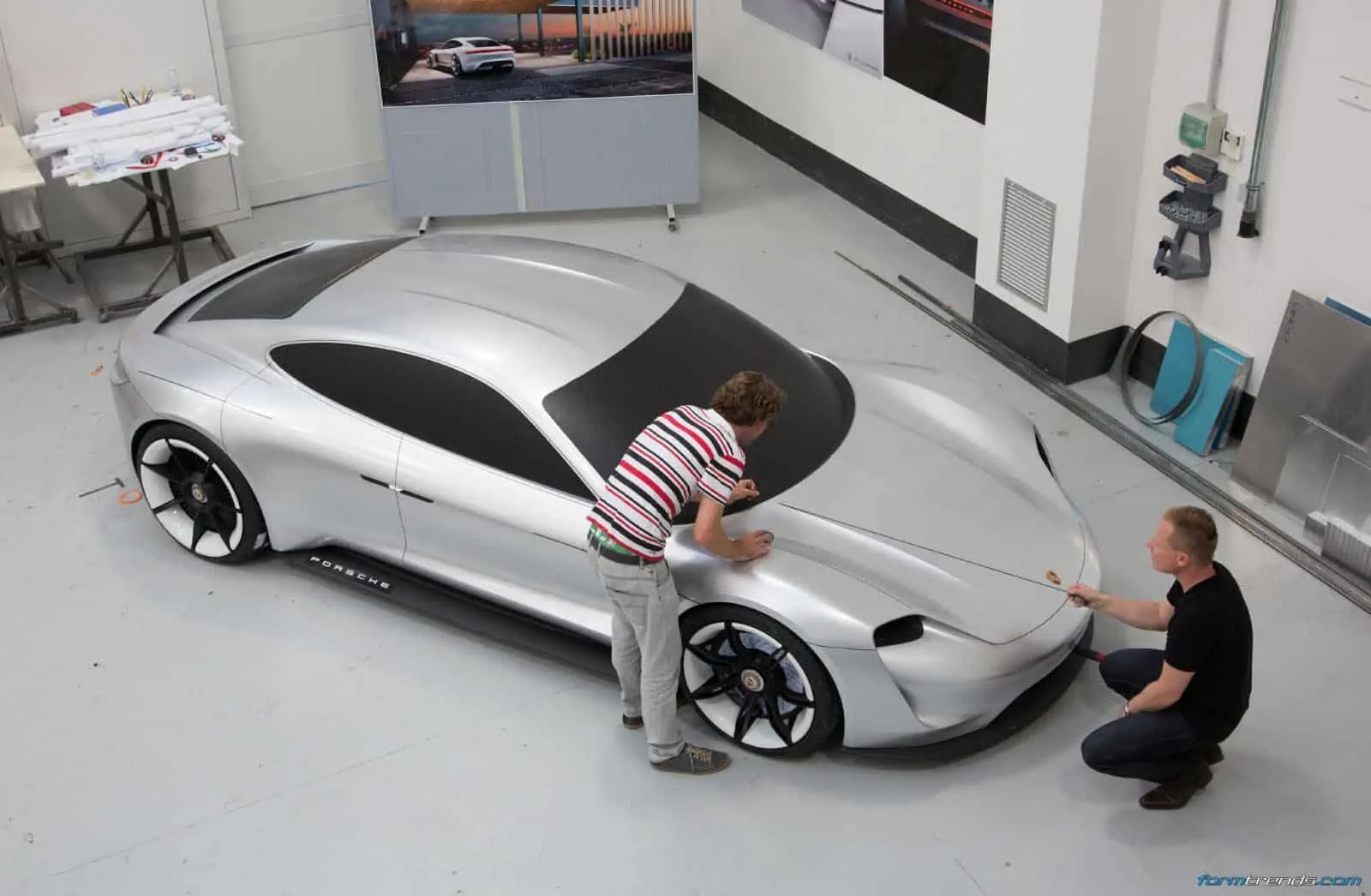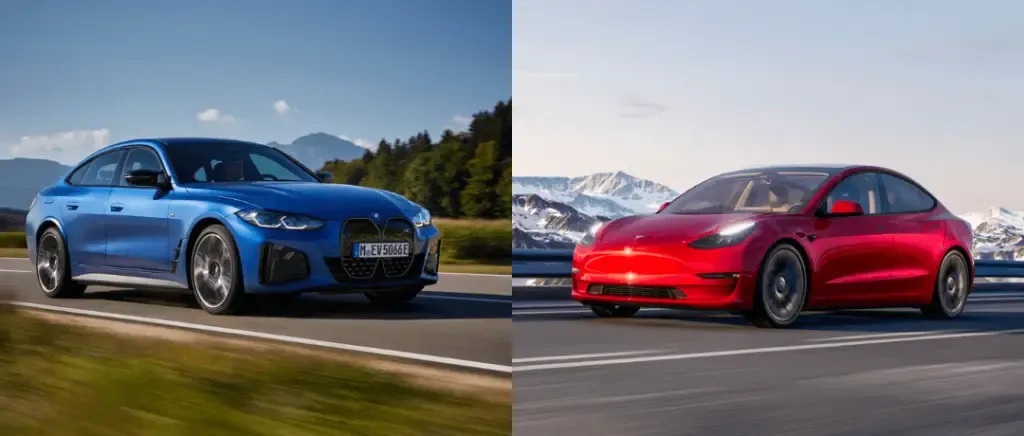An interesting look inside the future Porsche setup today through Frankfurt's IAA. The fair uncovered Mission E is totally stunning. Exploring the pictures, my mouth was totally open in jubilant shock and enjoyment.
Envision the smooth and streaming bath Porsche outline, with bends like a 550 Spyder and position like a super Cayman. The put in a perfectly negligible shade at one or the flip side and four entryways under a ultra low and lean roof.The look has all of the first Boxster idea's star power.

Running an all-new battery electric powertrain, the vehicle guarantees extraordinary things for future supercoupe purchasers. However, obviously awful news for Tesla. Particularly in the event that the charging season of 15-mins and a scope of 310 miles are likewise sensible in the 2019 model-year.
2015 Porsche Mission E
World debut of the primary battery-fueled four-seat idea vehicle from Porsche.Porsche Mission E: 600 hp, 500 kilometer driving reach, 15 minutes charging time.
Stuttgart. In introducing the Mission E at the IAA in Frankfurt, Porsche is presenting the primary all-electrically controlled four-seat sports vehicle in the brand's set of experiences. The idea vehicle joins the undeniable profound plan of a Porsche with superb execution and the ground breaking reasonableness of the initial 800-volt drive framework.
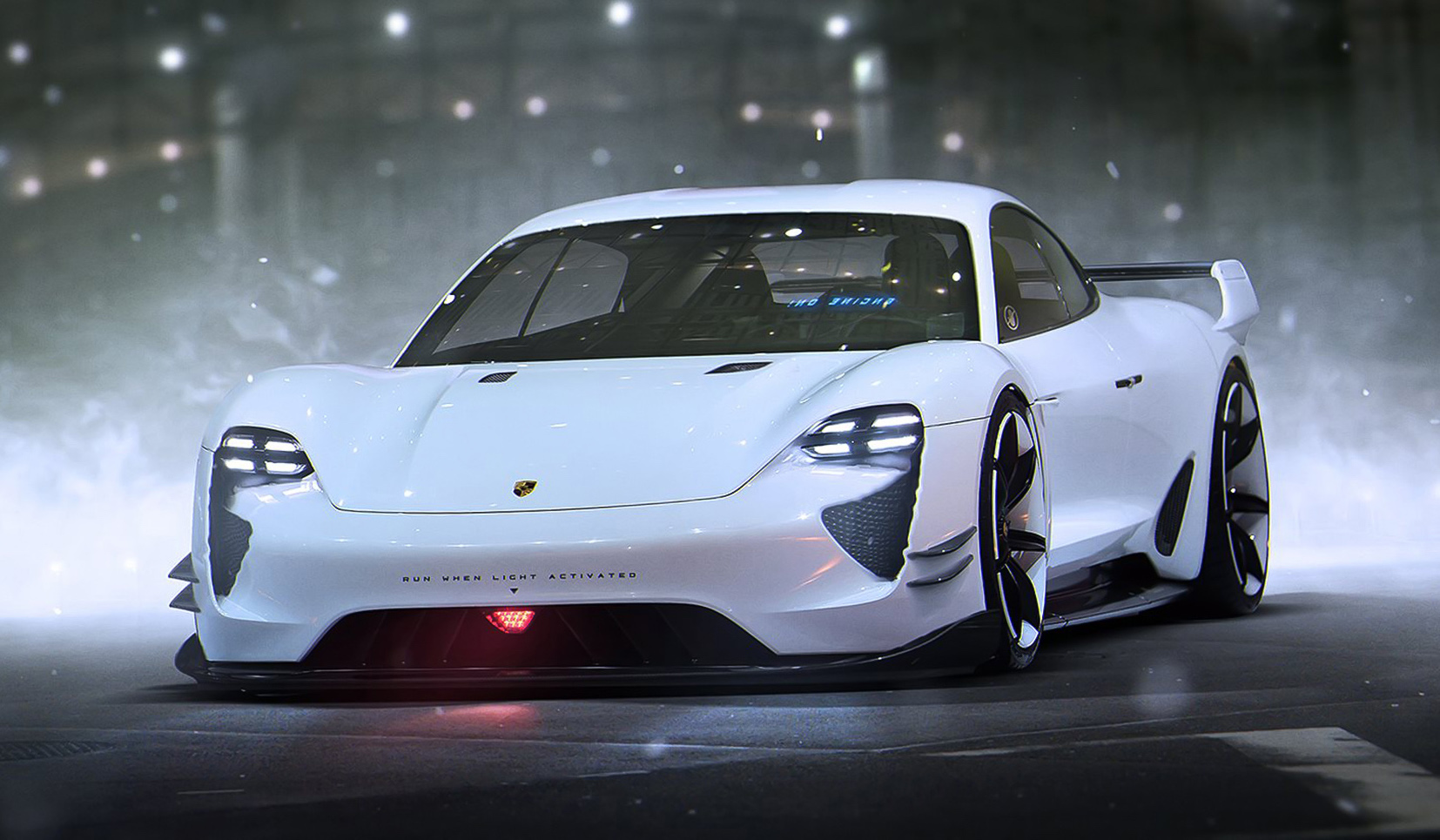
Key determination information of this interesting games vehicle: four entryways and four single seats, more than 600 hp (440 kW) framework power and north of 500 km driving reach. All-wheel drive and all-wheel directing, zero to 100 km/h speed increase in under 3.5 seconds and a charging season of something like 15 minutes to arrive at a 80 percent charge of electrical energy. Instruments are naturally worked by eye-following and motion control, some even through multi dimensional images - profoundly arranged toward the driver via consequently changing the showcases to the driver's situation.
Drive framework: north of 600 hp with innovations from perseverance hustling
The drive arrangement of the Mission E is altogether new, yet it is average Porsche, for example demonstrated in engine hustling. Two super durable magnet simultaneous engines (PMSM) - like those utilized in the current year's Le Monitors victor, the 919 half breed - speed up the games vehicle and recuperate slowing down energy. The best verification of a Porsche is 24 hours of top hustling execution and a 1-2 completion. Together the two engines produce north of 600 hp, and they move the Mission E to a speed of 100 km/h in under 3.5 seconds and to 200 km/h in less than twelve seconds.
Notwithstanding their high proficiency, power thickness and uniform power improvement, they offer another benefit: not at all like the present electric drive frameworks, they can foster their full power even after numerous speed increases at short stretches. The need-based all-wheel drive framework with Porsche Force Vectoring - which naturally conveys force to the singular wheels - moves the drive framework's capacity to the street, and all-wheel guiding gives exact, energetic controlling in the ideal bearing. This makes the Mission E fit for the circuit race track; its lap time on the Nürburgring Nordschleife is under the eight-minute imprint.
Regular common sense: advantageous and speedy charging, more than 500 km driving reach
Enthusiastic energy makes up a Porsche as well as an elevated degree of ordinary common sense. In like manner, the Mission E can go north of 500 km on one battery charge, and it very well may be accused of sufficient energy for around 400 km really driving reach in around fifteen minutes. The explanation: Porsche is a leader in presenting imaginative 800-volt innovation interestingly. Multiplying the voltage - contrasted with the present electric vehicles that work at 400 volts - offers various benefits: more limited charging times and lower weight, since lighter, more modest gage copper links are adequate for energy transport.
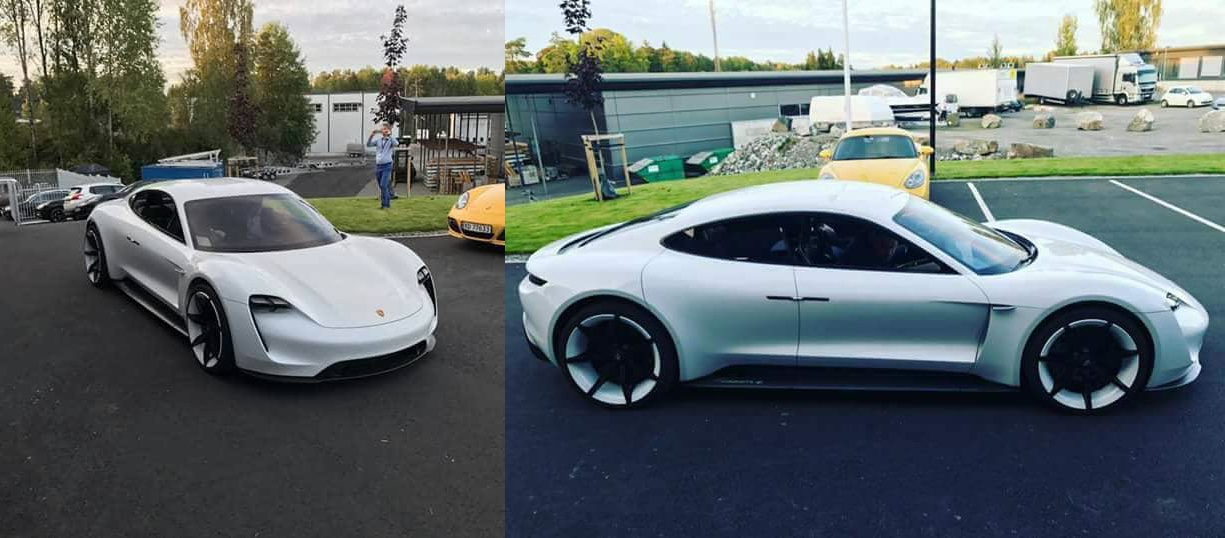
A moveable body section on the front left wing before the driver's entryway gives admittance to the charging port for the inventive "Porsche Super Charging" framework. Through the 800-volt port, the battery can be charged to roughly 80% of its ability in something like 15 minutes - a record time for electric vehicles. As another option, the innovation stage can be associated with a regular 400-volt charging station, or it very well may be renewed at home in the carport through helpful inductive charging by just leaving over a loop implanted in the floor of the carport from which the energy is moved without links to a curl on the vehicle's underbody.
Low focus of gravity for predominant driving elements
Another element that is run of the mill of a Porsche sports vehicle is a lightweight idea with ideal weight dispersion and a low focus of gravity. The battery mounted in the vehicle's underbody, which depends on the most recent lithium-particle innovation, runs the entire length between the front and back axles.
This circulates its weight to the two drive axles consistently, bringing about particularly great equilibrium. Also, it makes the games vehicle's focal point of gravity incredibly low. Both of these variables essentially support execution and a games vehicle feeling. The body all in all is comprised of a utilitarian blend of aluminum, steel and carbon fiber built up polymer. The wheels are made of carbon: the Mission E has wide tires mounted on 21-inch wheels in front and 22-inch wheels at the back.
Configuration: entrancing games vehicle with Porsche DNA
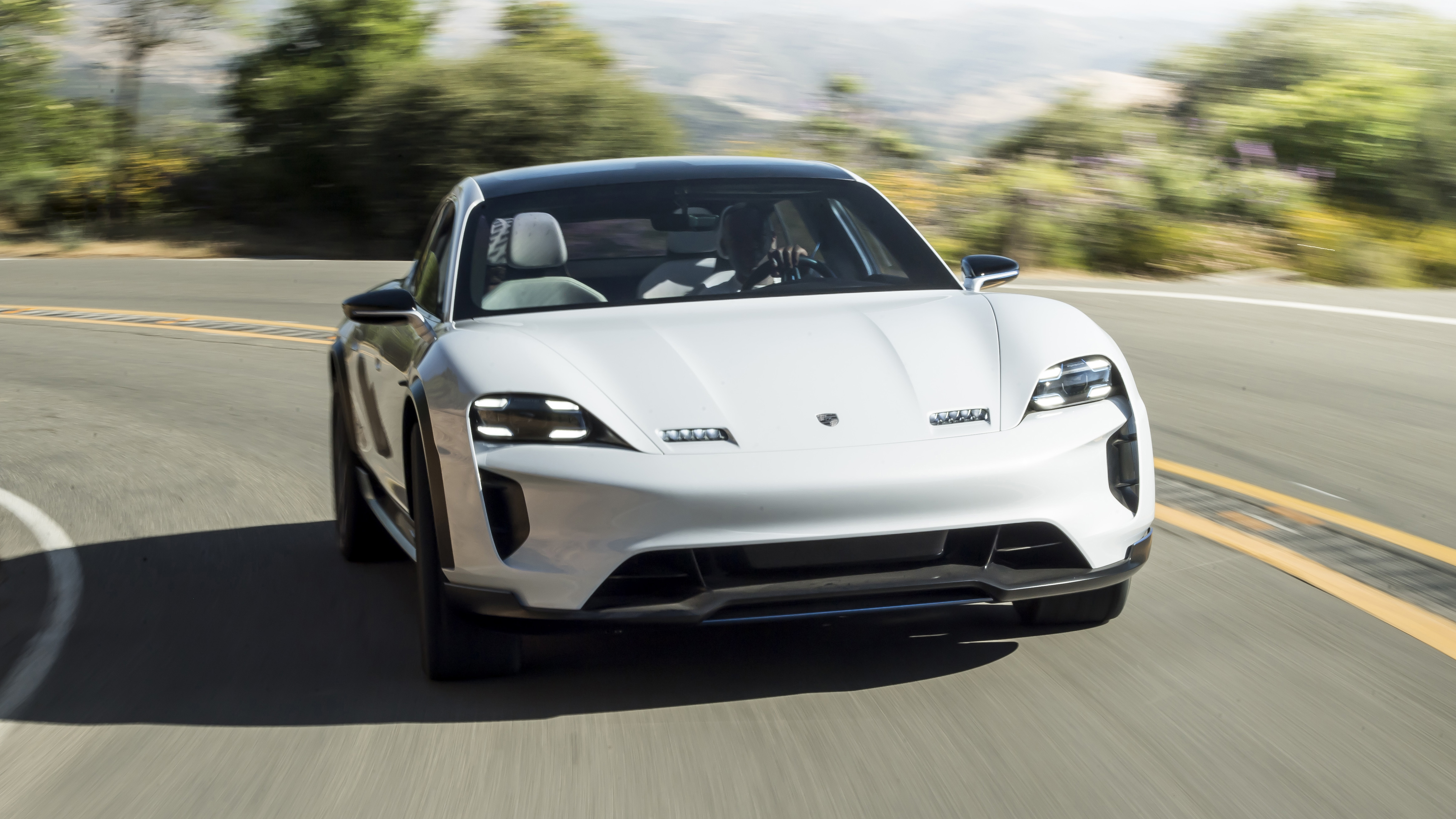
Each square inch, each point, each sweep of the Mission E reflects one thing regardless of anything else: profound liveliness in the best practice of Porsche plan. The beginning stage is the model of a game cantina with a low level of 130 cm with sports vehicle credits from Zuffenhausen that exemplifies noticeable developments like its coordinated optimal design.
Particular air channels and outlets - on the front, sides and at the back - encapsulate the body's full move through plan that upgrades proficiency and execution. Coordinated air guides further develop wind current around the wheels, for example, and air outlets on the sides lessen overpressure in the wheel wells, accordingly diminishing lift.
